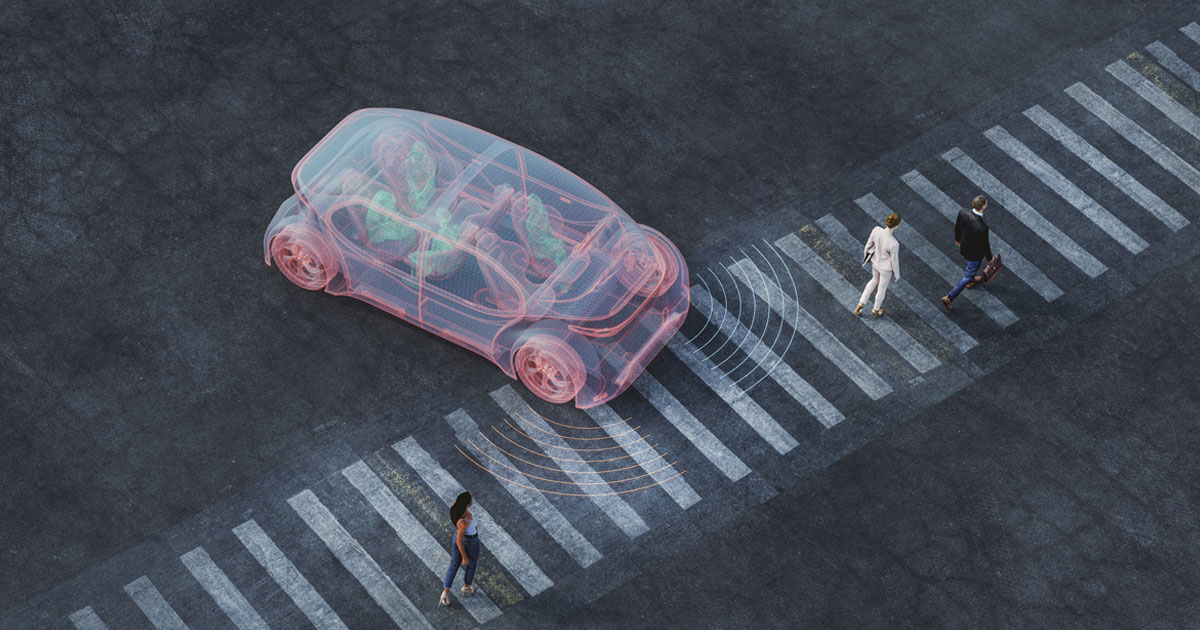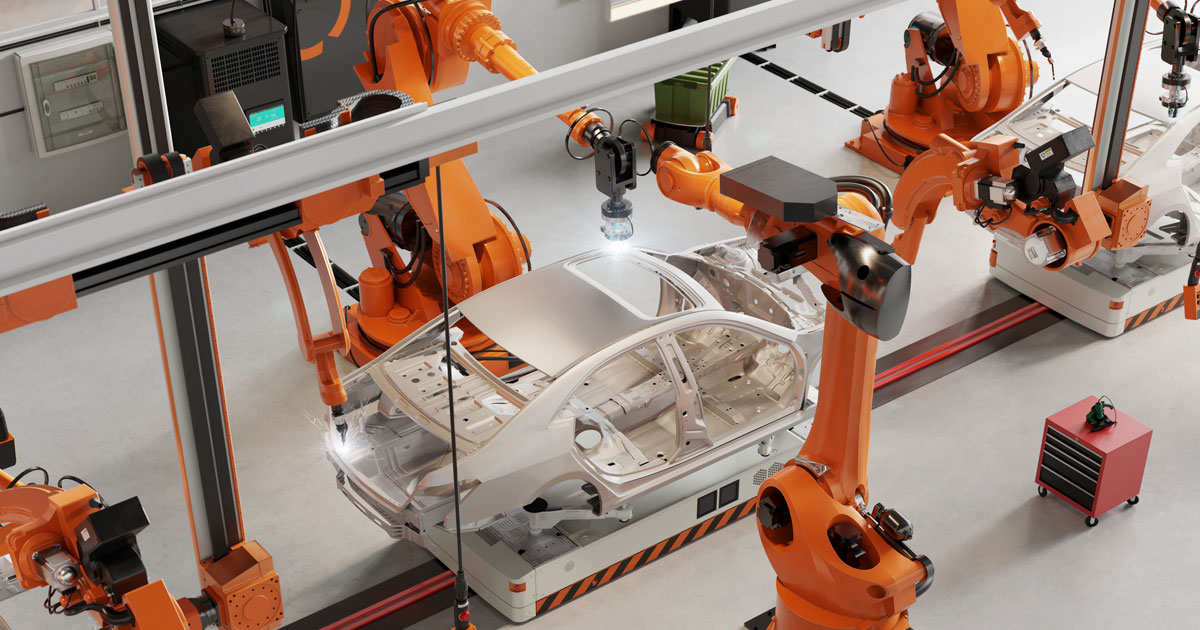Technology is the core of the automotive industry. Without continuously advancing technology, it would have been nearly impossible for engineers to modify the original automobile into what it is today. Even now, the automotive industry is still undergoing significant transformation as technology continues to progress.
With the help of modern tech, the overall safety of automobiles has substantially increased over the past few decades. Today, automakers are still working to leverage new technology to create a safer future for automobile users around the world. Learn more below about how engineers are using state-of-the-art technology to change the industry for the better.
How Automakers Use Technology
Cars are filled with various forms of intricate technology, and automakers put this technology to work to help your car operate in essential ways. Every mechanism plays an imperative role in the function of your vehicle, as well as your safety.
The following are just a few of the varying forms of tech that you can find in the average car today:
- Engines
- Brakes
- Airbags
- Seatbelts
- Steering mechanisms
- Automatic windows
- Heating and cooling systems
- Radios
- Backup assistance
- Cameras
Technology’s Impact on the Automotive Industry
Without mechanical technology, cars could not exist. Even the most basic forms of technology have played a role in enhancing automobiles over the years. By taking a look back at the first car ever made, you can clearly see the transformation that has occurred over the past century.
The original automobile was incredibly basic. Composed of just three wheels, a simple motor, and a steering wheel, the first design was patented by Karl Benz. However, this model was quickly modified into a more similar structure to the cars you use today. Soon after the release of the first few automobile designs, Henry Ford revealed the revolutionary Model T in 1908.
With four wheels, a retractable carriage awning, comfortable seating, and an affordable price, the Model T became the first widely used automobile in the United States. What really separated the Model T from other automobiles was Ford’s ability to mass produce it. The invention of this basic technology – now known as the assembly line – transformed the industry.

Once the mass production of the Model T began, engineers around the world began racing to create innovative technology that could help them create cutting-edge vehicles of their own. Due to the competitive nature of the industry in its formative years, however, there was more of a focus on producing vehicles than there was on safety for the drivers. It was not until the late 1940s and 50s that people began realizing the true danger that automobiles present to drivers, passengers, and pedestrians.
With the implementation of more secure seatbelts, more durable vehicles, and stricter safety standards by the end of the 1960s, engineers began using advanced technology to prioritize safety in cars. Today, safety regulations for vehicles are more meticulous than ever, ensuring that all vehicles that are created pass certain tests and meet requirements to protect their passengers.
Suggested Reading: Most Iconic Auto Designers
Recent Technology Has Transformed the Auto Industry
Over the past two decades, the safety and functionality of automobiles have greatly improved.
Some of the most innovative technologies that have aided in improving the basic automobile include the following:
Cameras
Because camera technology has also seen significant advances over the recent decades, automakers were finally able to add functional, reliable cameras to their vehicles. The addition of cameras in cars has made an immense difference in the safety of both drivers and pedestrians.
For example, backup cameras have become an essential feature in almost every vehicle that is produced today. They not only allow drivers to back out of difficult spots with ease, but they help them to avoid people or objects that they may not be able to see. Some cars even add cameras on your vehicle’s side mirrors, helping you to see blind spots when you’re driving or reversing.
Sensors
The addition of automated sensors has also made a remarkable difference for drivers. Sensor technology, including radars and a light-based tech called LiDar, helps cars to accurately alert drivers of objects in their path, read the speed of the vehicle, and more. Sensors are added on the front, sides, and rear of the vehicle in hopes that they can prevent future accidents and make driving easier for everyone involved.

In most cars that use sensor technology, the vehicle will beep if the driver is approaching an object. The beeps may become more intense the closer an object gets to your car; in some vehicles, your automatic brakes may even be activated to prevent a collision. By combining sensors with camera technology, cars have become much easier to operate, and countless potential accidents have been avoided.
Computer Software and Digital Tech
Cars have become increasingly dependent on computer software as their design has progressed.
The digital technology that is implemented in your car helps to provide you with a wide collection of important features, including:
- Parking assistance
- Touch-screen control centers
- Temperature readings of your engine and your car
- Temperature regulation
- GPS
- Cruise control
- Miles per gallon information
- Emissions monitoring
- Speed information
- Accurate camera images for reverse assistance

Electric Engines
The introduction of the electric engine to the automotive industry has induced widespread change across the field. With the environment heavy on automakers’ minds, the industry has consistently been testing new methods to cut emissions and make cars more eco-friendly.
Electric cars are much better for the environment than vehicles run by your average gas-powered engine. This is because electricity is a renewable resource, which eliminates the need to cause environmental harm while obtaining fuel. It also releases much less carbon dioxide than an engine that is powered by gas.
Suggested Reading: Which Electric Car Should I Buy
Modern and Future Changes in Automotive Technology
Technology is constantly improving. This allows the automotive industry to use new developments to their advantage. While the future of technology in this industry is still unknown, it is clear that advances are transforming vehicles immensely. Some changes you can expect to see in the future of the automotive industry include the following:
Artificial Intelligence
Artificial intelligence is currently one of the most popular conversation topics across the globe. AI is a form of technology that is designed to be able to “think” for itself. By harnessing the power of artificial intelligence, the automotive industry benefits in a multitude of ways. From being able to design a new vehicle on its own to acting as an autonomous component to assist you while driving, artificial intelligence offers endless possibilities for the development of automobiles.
Self-Driving Vehicles
Self-driving technology has been conceptualized for decades. Just recently, this concept has finally been brought to life and coupled with the understanding that human error is the largest cause of automobile accidents. Whether the driver was distracted or failed to follow traffic laws, negligent drivers often cause dangerous accidents that can result in injury. While autonomous vehicles have still not reached their full potential, automakers who are currently developing them hope that they will be able to eliminate human error.
In addition to the potential for increased safety, self-driving vehicles could also be a promising addition to public transportation. Artificial intelligence that is used to help operate the vehicle can be assigned to a regular schedule, which would allow a bus or car to make stops as they are directed.
Increased Personalization
Personalization options have only expanded since the inception of the first car. With cutting-edge technology, automakers are working on broadening the personalization choices for every vehicle. This can involve providing more options for features a driver can add to their car as well as the use of intelligent technology to customize a vehicle’s settings. The digital technology used in these vehicles will act similarly to a computer but most likely use aspects of AI. This will allow it to listen to instructions, observe driving behavior, and help to provide the most personalized driving experience yet.
Suggested Reading: Five Tech Add-Ons for Your Car
Upgraded Safety for Passengers and Pedestrians
Car accidents have the potential to seriously injure someone or even take their life. Because of this, automakers are constantly looking for ways to enhance the safety of a vehicle. While additions such as automated sensors and backup cameras have already changed the world of driving drastically, new improvements to vehicles with the help of developing technology are highly anticipated.
How Is AI Influencing the Car Industry?
Artificial intelligence is revolutionizing countless industries, including the automotive industry. With its implementation in the automotive field, all areas of the industry are seeing advantageous change. Below are some influences that AI has had on the car industry.
More Efficient Manufacturing
AI has already had an exceptional influence on the vehicle design and manufacturing process. The use of intelligent robots during assembly means there are fewer problems that occur as a result of human error. This makes for a more efficient assembly process which ultimately results in factories producing high-quality cars at a faster rate.

Increased Safety for Passengers and Pedestrians
As mentioned, intelligent software installed in a vehicle can help make driving safer for passengers and other people on the road. When artificial intelligence, cameras, and sensors are combined, they can be a powerful tool to aid drivers and help prevent accidents. Artificial intelligence is also getting to the point where it can operate a vehicle on its own. When it acts as an autonomous vehicle, this can eliminate the human error that often makes driving so dangerous.
Higher Quality Vehicles
Artificial intelligence, simply put, is like a more intelligent version of a human employee. This means that when it is used during the automotive design and manufacturing process, it can help to create higher-quality products. AI has the ability to design, craft, and monitor the objects it creates. This allows it to easily notice when issues occur, making it integral to the quality control process. With a more regulated manufacturing system, AI works to create higher-quality vehicles more efficiently.
Enhanced Driving Experience
The driving experience is changing greatly with the power of AI. Vehicles are becoming more customizable, easier to use, and more comfortable to drive or ride in. Artificial intelligence enhances the driver’s experience by offering assistance while they are offering the vehicle. This includes backup and parking assistance, hands-free phone and radio capabilities, and even the ability to ask your car questions.
Find a Car with Technology That Keeps You Safe
It’s clear that as technology continues to advance, so will cars. From the changes in the production process to the creation of innovative new vehicles, recent developments in technology have transformed the automotive industry forever.
If you’re considering buying yourself a new vehicle, it’s critical to focus your search on safety as well as style. Visit our DIY car maintenance tips for insight on safety and saving money.
I’m a kid at heart disguised as an auto researcher and business owner. I’ve always enjoyed providing insight in the form of reviews (anime, video games, autos, etc.) When I’m not researching, I’m spending time with my family, driving my Dodge Challenger, riding my motorcycle, and finding new entrepreneurial pursuits.


